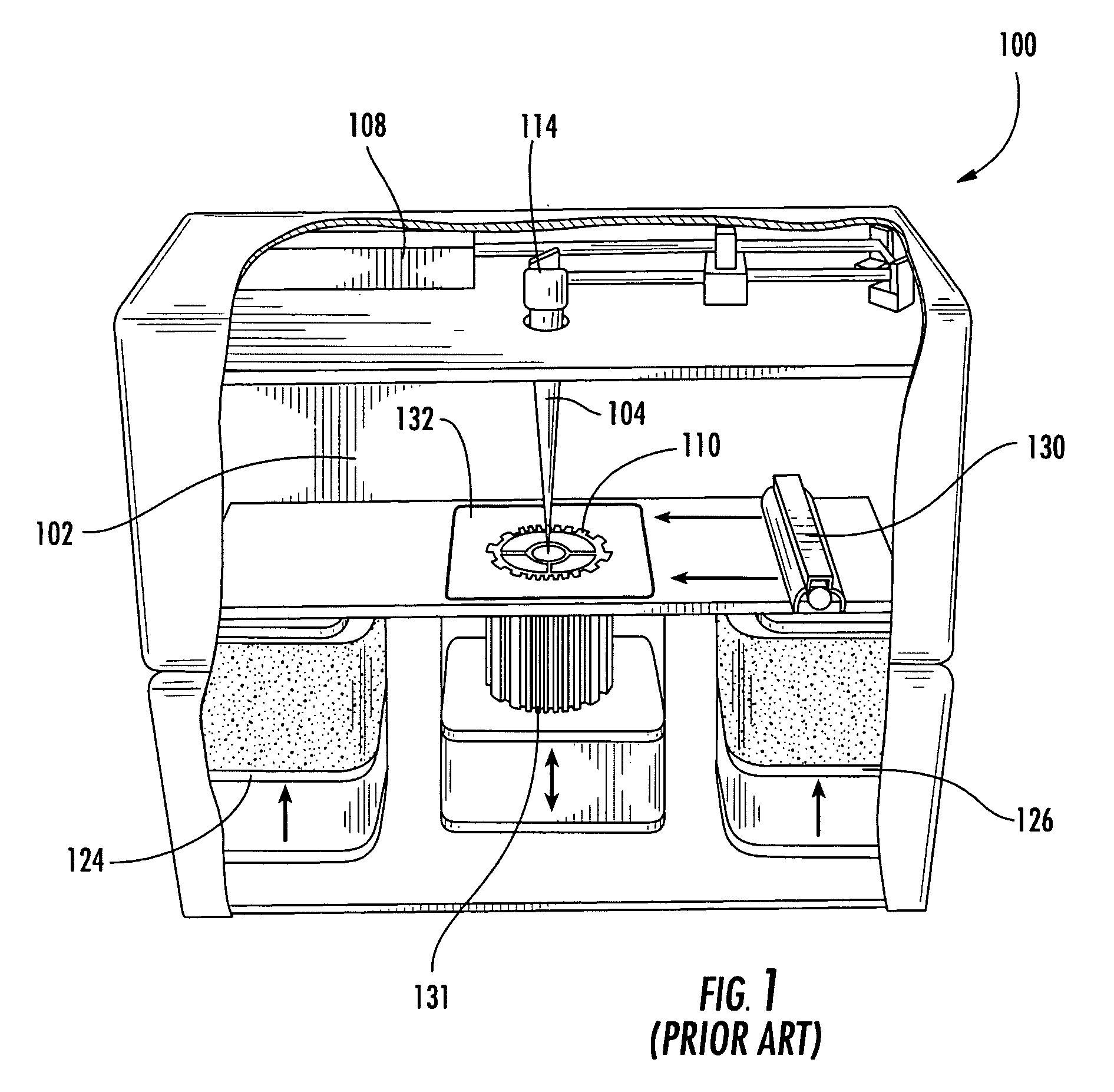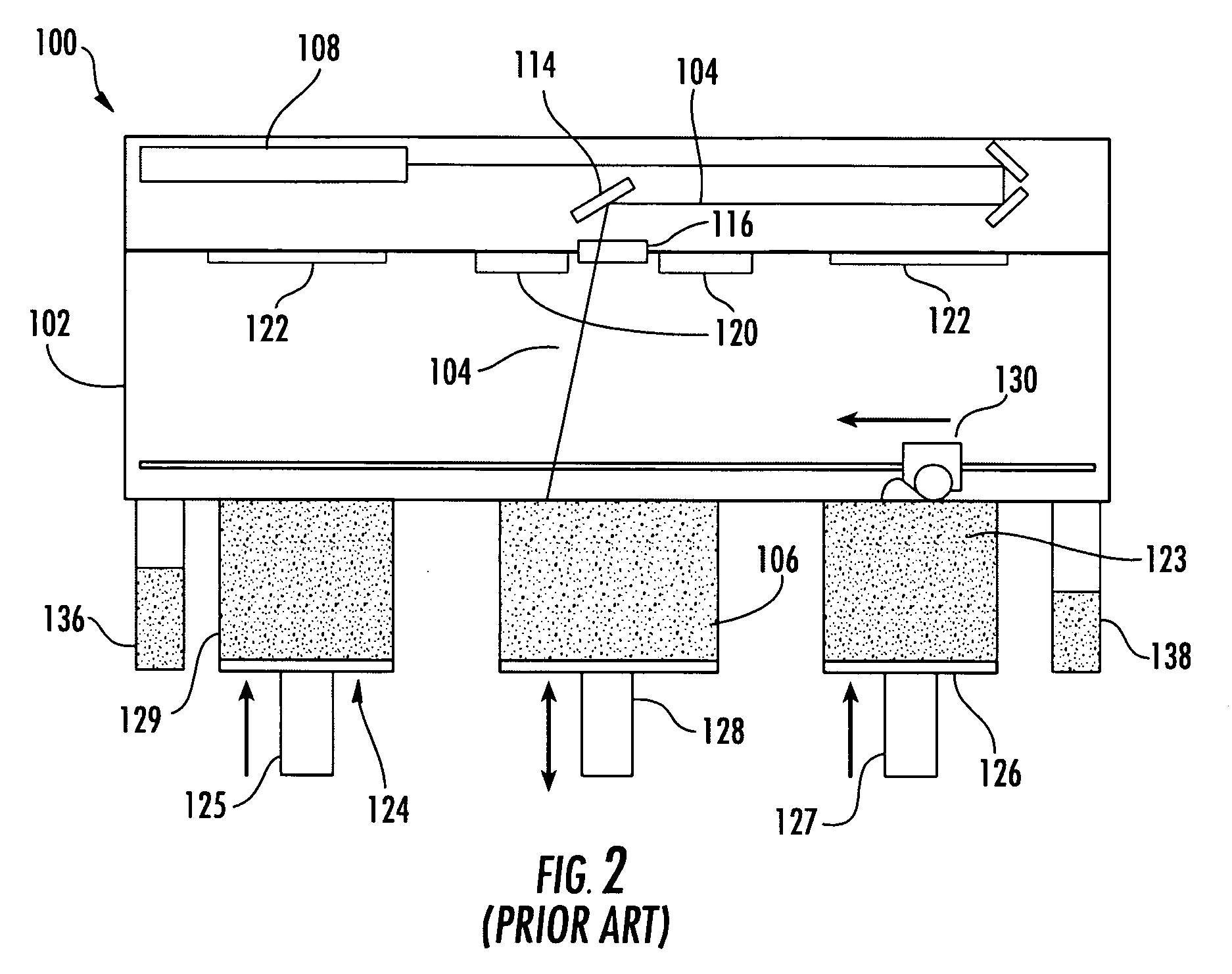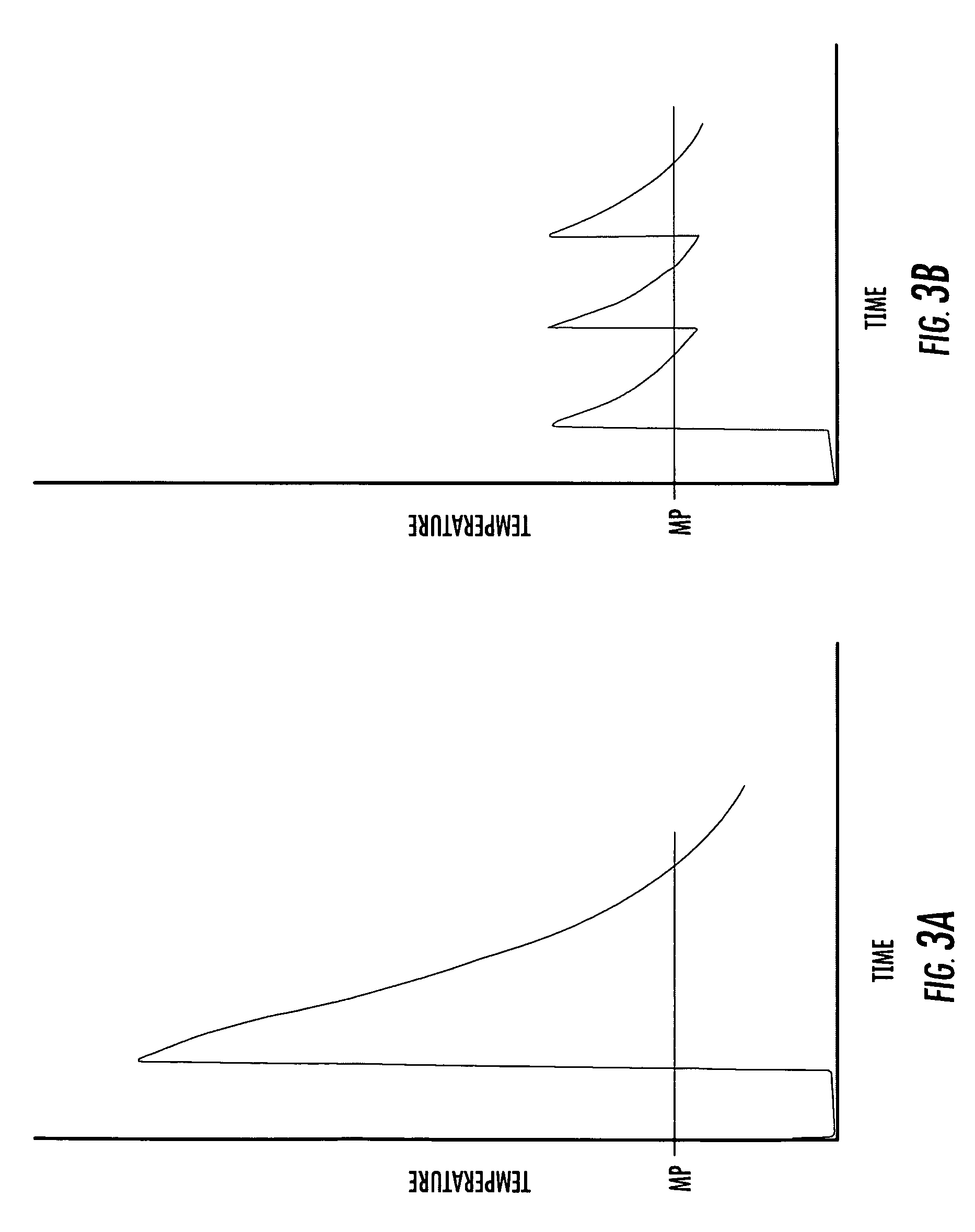Controlled densification of fusible powders in laser sintering
- Summary
- Abstract
- Description
- Claims
- Application Information
AI Technical Summary
Benefits of technology
Problems solved by technology
Method used
Image
Examples
examples
[0049] The following Examples are for illustrative purposes only and should not be considered limiting in any way.
[0050] In the following examples, the samples were prepared by sintering a layer of DuraForm® nylon powder with from 1 to 3 scans at varying laser intensities. A 100 watt high speed Vanguard™ V207 laser sintering system available from 3D Systems, Inc. was used to form the samples.
[0051] For convenience, the examples in Table 1 below illustrate multiple scans of equal low power. In some cases, the examples show relative tensile elongation improvements of 100% or better compared to a conventional single scan technique (column for 1 scan in Table 1) and improvements of approximately 30% in elongation compared to elongations of approximately 10% for the conventional technique.
[0052] It should be recognized that multiple scans at too high a power will result in growth, as shown above in Table 1 for the example of 10 scans at 7 watts.
[0053] Multiple scanning is desirably a...
PUM
| Property | Measurement | Unit |
|---|---|---|
| Thickness | aaaaa | aaaaa |
| Mass | aaaaa | aaaaa |
| Area | aaaaa | aaaaa |
Abstract
Description
Claims
Application Information
 Login to View More
Login to View More - R&D
- Intellectual Property
- Life Sciences
- Materials
- Tech Scout
- Unparalleled Data Quality
- Higher Quality Content
- 60% Fewer Hallucinations
Browse by: Latest US Patents, China's latest patents, Technical Efficacy Thesaurus, Application Domain, Technology Topic, Popular Technical Reports.
© 2025 PatSnap. All rights reserved.Legal|Privacy policy|Modern Slavery Act Transparency Statement|Sitemap|About US| Contact US: help@patsnap.com



